Courageous Acts of Crane Conservation
Saving cranes is about so much more than saving cranes. Don’t get me wrong, I’m an incurable craniac. I cherish these ancient, endangered birds – our symbols of wisdom, peace, good fortune, and grace from the Anishinaabe Crane Clan of Lake Superior to the aboriginal peoples of Australia, from the Buddhists and Hindus of Asia to the diverse cultures of Africa.
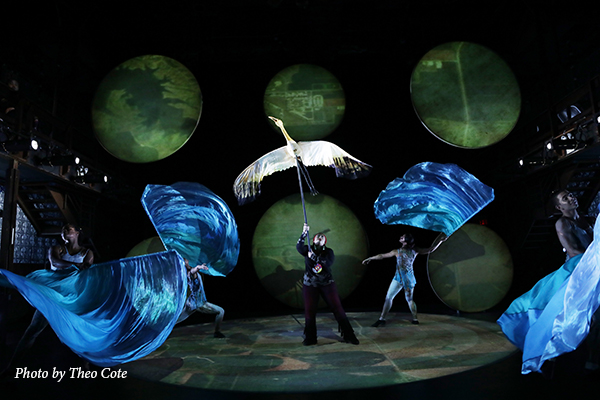
But the past 50 years have taught us many things about what it really takes to save cranes. It takes a deep, long-term commitment to healthy wetlands, grasslands, and agricultural lands, and the people who share them. It takes sound science and plenty of creativity to solve problems in those places, and along the flyways that link them together. It takes strong partnerships among nations, regions, communities, and all who care. It takes passionate and effective leadership in the places that matter most.
We have also learned that when we work together to save cranes, many other species benefit. Our effort to restore the Kafue Flats of Zambia for Wattled Cranes helps endangered Kafue Lechwe antelope, buffalo, hippo, zebra, and more than 450 bird species. We’ve helped create six national crane reserves to protect the last remaining wetlands of the Mekong Delta and its endangered wildlife in Southeast Asia. Our efforts to promote crane-friendly agriculture supports farmers who support the abundant wildlife that depend on healthy farmlands.
And people benefit too. Across Africa and Asia, our projects support sustainable livelihoods, safe water, health access, family planning, and other basic human needs for the marginalized communities that share their lands with cranes. We help communities adapt to global warming with climate-smart agricultural practices and improved water supplies during drought. And when cranes damage crops, from Wisconsin to Kenya, we work to find lasting solutions for the farmers who share their lands with cranes.
As I look out on the horizon to the next 50 years, I see enormous threats to our land, water, and livelihoods, exacerbated by our changing climate. I see enormous challenges to sustaining wildlife in our shared landscape. But I am encouraged knowing that when we work together to save cranes, we can do big things that will make a real difference for our future.
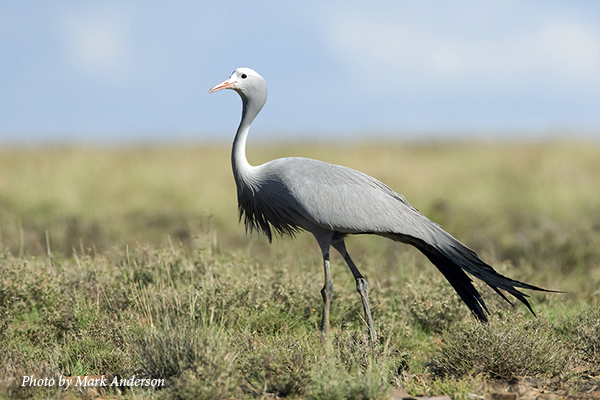
Combatting climate change through wildlife conservation
The wetlands, grasslands, and farmlands that sustain cranes store extraordinary amounts of carbon that help prevent the accumulation of global greenhouse gases…if managed well. Wildlife-friendly farming and rotational grazing, not just pristine lands, can serve as important sinks for carbon to stabilize our climate. The Drakensberg project in South Africa is our first foray into the complicated world of carbon offsets and co-benefits, in a landscape that supports endangered Blue, Wattled, and Grey Crowned Cranes.
This is an enormous opportunity to generate long-term financing for wetland and grassland conservation that not only incentivizes the expansion of protected areas and best-practice management activities but also provides seed funding for community livelihood co-benefits. If successful, this approach could be vital to the future of many crane landscapes in Africa, Asia, and North America, and to the global fight against climate change.
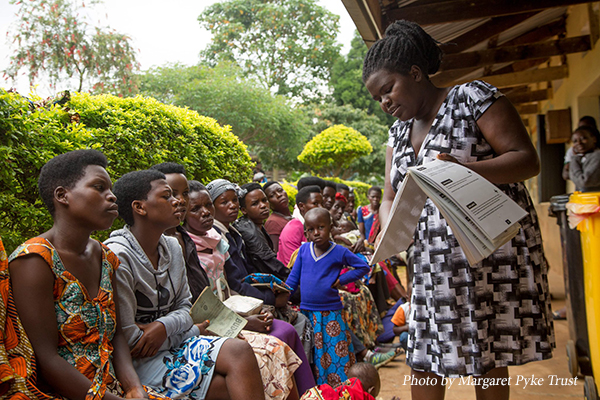
Securing wildlife by making a real difference for the
people who share their lands
The wetlands and grasslands that sustain cranes and other wildlife are often on private lands owned by farmers, ranchers, and other community members. In many places where we work, rapid population growth, chronic poverty, and food insecurity are fueling the conversion of these lands for settlements, agriculture, and livestock. In East Africa, we are betting that the future of Endangered Grey Crowned Cranes and other wildlife are best secured by providing tools to communities to empower themselves through improvements in family planning, public health, safe water and sanitation, livestock fodder, fruit trees, and other alternative livelihoods. Can we improve human well-being enough to make a real difference for wildlife in such a rapidly changing region? We don’t know but the future of cranes and wildlife here, and in many impoverished areas of Africa and Asia, hangs in the balance.

Managing protected areas so that wildlife and people
thrive together
Many of the world’s poorest countries have made enormous commitments to protected areas, havens for many endangered cranes and a rich diversity of other wildlife. Public support for these protected areas is essential as the conflict grows over limited natural resources. Our Kafue Flats Restoration Partnership in Zambia is about rethinking this protected area as a “thriving floodplain for all” that promotes healthy wetlands for endangered cranes and diverse wildlife, for the well-being and resilience of local communities, and for the regional and national economy.
Our successful invasive species removal project engaged local people in the restoration of a national park for the first time in Zambia, and now we are taking a big leap forward with our 20-year co-management partnership with the Government of Zambia to engage local communities in supporting law enforcement, sustainable land use and livelihoods, ecological restoration, and science-based adaptive management. Finding a sustainable balance between wildlife habitat and human needs on the Kafue Flats won’t be easy, quick, or cheap, but the future of Africa’s diverse, productive conservation lands (and cranes) is at stake.
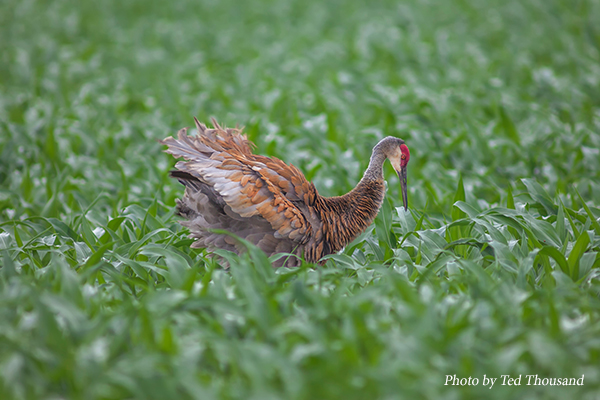
Solving crop depredation to find a lasting peace
between farmers and wildlife
Crop damage from cranes is a major problem in many places where we work. Sandhill Cranes in the U.S. (and their cousins, the Eurasian Cranes, in Europe) are a great conservation success story – thanks in large part to conservation on agricultural lands – but their growing numbers are giving rise to increasing crop depredation that creates a costly challenge for farmers. In poor countries of Africa and Asia, where crop depredation by cranes can threaten food security, we are seeing an increase in poisoning and shooting of cranes and other birds.
Our research in Wisconsin led to the development of Avipel®, a natural bird deterrent that helps prevent crop damage to corn, and now we are working to ensure this product is applied correctly and broadly across the U.S. and made affordable for farmers while developing new deterrents for other crops. These and other solutions will help us better support farmers who are so important in our efforts to save wildlife.
Elegant and inspiring, cranes demand courageous conservation solutions, and they bring us together to take action. We will carry many valuable lessons of the past 50 years with us long into the future, as we grow and expand our programs and impact. Thank you so much for your continued support and partnership as we seek a healthier planet for cranes, ourselves, and all life on earth, together.
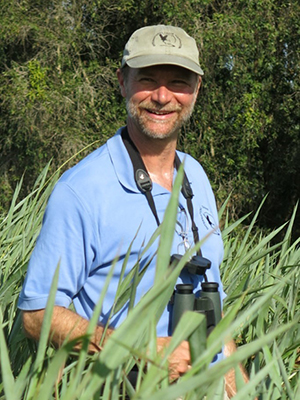
Rich Beilfuss, President and CEO
